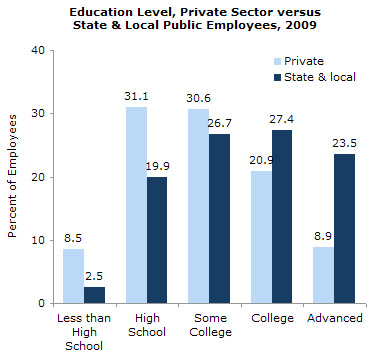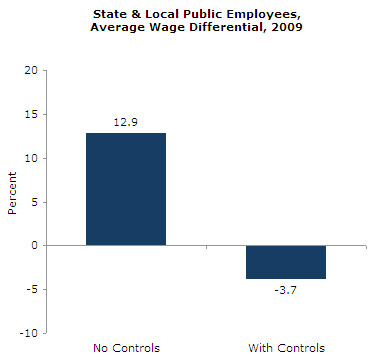Pay Penalty for State and Local Workers
May 12, 2010
Recent reports in the media have suggested that public-sector employees earn more than workers in the private sector. The problem with these analyses is that state-and-local government workers are older and have much higher levels of formal education than workers in the private sector. In a new CEPR report released today, I show that when state-and-local employees are compared to private-sector workers with similar characteristics (same age, same level of education, same state), the state-and-local workers actually earn 4 percent less, on average, than their private-sector counterparts.
This graph shows the differences in education levels between state-and-local and private-sector employees. Just over half of state-and-local workers have a four-year college degree or more, compared to just under 30 percent in the private sector.

And this graph shows the effects of controlling for these age and education differences. Without controls, state-and-local workers look to make about 13 percent more than private-sector workers. But once we factor in the older, better-educated workforce in the state-and-local sector, the pay premium turns into a four percent pay penalty.

CEPR also released a second, related report today, on benefits paid to state and local workers. More on that tomorrow.
UPDATE 06/07/2010: Holly Yeager at the Columbia Journalism Review's Campaign Desk ("politics, policy, and the press") cited the report in a post commenting on a piece by Ben Smith and Maggie Haberman in today's Politico.
On June 1, the New York Times Economix blog posted one of the graphs from the report. The graph that caught their eye showed state-and-local public employees as a share of all employees in each state. As the post noted: "It appears that more conservative states --which we traditionally think of as wanting smaller government-- nonetheless have a higher share of their work force employed by the public sector."